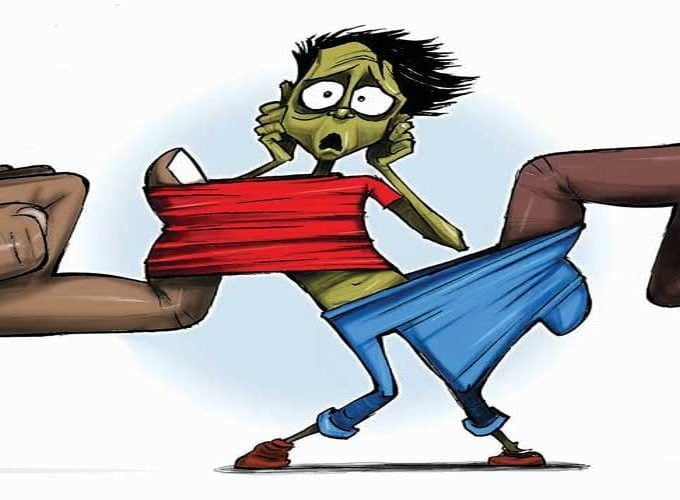Violence is a term that is often used in everyday conversation and media. It is a multifaceted and complex concept encompassing various behaviors and actions. Violence is the power or coercion to physically, emotionally, or mentally harm, damage, or abuse others. This blog post aims to comprehensively understand violence by exploring its definition, meaning, types, and causes.
Definition and Meaning of Violence
Violence is a term that covers a wide range of actions and behaviors that involve the use of force or power to harm or damage others. This can refer to physical acts of aggression, such as hitting or punching, as well as emotional and mental forms of violence, such as verbal abuse or manipulation.
- Violence is a broad term encompassing many behaviors (American Psychological Association [APA], 2019).
The American Psychological Association (APA) defines violence as intentionally using force or power to harm, damage, or abuse others. This can include acts such as domestic violence, bullying, sexual assault, and other forms of abuse.
- It refers to using force or power to harm, damage, or abuse others (APA, 2019).
It is important to note that violence is not limited to physical actions but can also include emotional and mental harm. Emotional violence may include gaslighting or belittling, while mental violence can include manipulation or coercion.
- Violence can be physical, emotional, or mental (APA, 2019).
Overall, violence encompasses a wide range of harmful and abusive behaviors toward others, and it is importantessentialnize and addresses these behaviors to promote healthy and safe relationships and communities.
The Meaning of Violence
The causes of violence are complex and multifaceted. They can include individual factors such as mental illness, substance abuse, past trauma and broader societal factors such as poverty, inequality, discrimination, and cultural norms that condone or justify violence.
- Violence is a socially constructed concept that varies across cultures and societies (World Health Organization [WHO], 2021).
Violence is a complex and multifaceted concept shaped by social, cultural, and historical factors. It is generally understood as behaviors or actions that cause harm, injury, or death to others. However, the definition of violence can vary across cultures and societies, and what is considered violent in one context may not be seen as such in another.
- It is often associated with negative behaviors and actions that harm others (WHO, 2021).
While violence is often associated with negative behaviors and actions, it can also be used as a means of control, domination, or power. For example, some individuals or groups may use violence to assert their authority over others or to intimidate or coerce them into compliance. This can take many forms, such as physical violence, emotional abuse, or economic exploitation.
- Violence can also be used as a means of control, domination, or power (WHO, 2021).
Violence is a complex and nuanced concept that requires careful consideration of its many dimensions and implications. Understanding the meaning of violence is crucial for addressing and preventing its harmful effects on individuals, communities, and societies.
Causes of Violence
Individual Factors
Several individual factors can contribute to violent behavior. Some individuals may be more predisposed to violence due to their biology or personality traits. For example, research has shown that individuals with a history of aggression or impulsive behavior may be more likely to engage in violent behavior in the future. Additionally, certain mental illnesses, such as bipolar disorder and antisocial personality disorder, have been linked to an increased risk of violent behavior.
Some individuals may be predisposed to violence due to their biology or personality traits (APA, 2019).
- There is evidence to suggest that some individuals may have a genetic predisposition to violent behavior. Studies have shown that specific genes, such as the MAOA gene, may be linked to increased aggression and violent behavior. However, it’s important to note that genetics alone do not determine behavior, and environmental factors also play a significant role.
- In addition to genetics, personality traits can contribute to a predisposition to violence. For example, individuals who score high on impulsivity, hostility, and aggression may be more likely to engage in violent behavior. Personality disorders such as antisocial and borderline personality disorder have also been linked to an increased risk of violent behavior.
- It’s important to note that having a predisposition to violence does not necessarily mean an individual will engage in violent behavior. Environmental factors, such as upbringing and life experiences, also play a significant role in shaping behavior. Interventions such as therapy and behavioral interventions can help individuals learn how to manage their predispositions and reduce the risk of violent behavior.
Substance abuse, mental illness, and stress can also contribute to violent behavior (APA, 2019).
Substance abuse, such as drug or alcohol use, can impair judgment, decreased inhibitions, and increased aggression. This can lead to violent behavior, particularly in individuals prone to impulsivity or aggression.
- Mental illness can also contribute to violent behavior: Conditions such as bipolar disorder, schizophrenia, and borderline personality disorder have been linked to an increased risk of violent behavior, particularly during episodes of psychosis or mania. However, it’s important to note that most people with mental illness do not engage in violent behavior.
- Stress can also play a role in violent behavior: Chronic stress can lead to feelings of frustration, anger, and aggression, which can build up over time and result in violent outbursts. In addition, acute stressors, such as a traumatic event or a difficult life situation, can also trigger violent behavior in some individuals.
It’s important to note that substance abuse, mental illness, and stress do not necessarily cause violent behavior in all individuals. However, they can increase the risk of violent behavior in individuals who are already prone to aggression or have a history of violent behavior. Effective substance abuse, mental illness, and stress treatment can help reduce these individuals’ risk of violent behavior.
Poor impulse control and lack of empathy may increase the likelihood of violent behavior (APA, 2019).
- Poor impulse control refers to the inability to resist an urge or impulse and can lead to impulsive and aggressive behavior. Individuals with poor impulse control may act without considering the consequences of their actions, which can lead to violent outbursts.
- Lack of empathy refers to a difficulty or inability to understand or share the feelings of others. Individuals who lack empathy may be less likely to consider the impact of their actions on others and may be more likely to engage in violent behavior.
- Both poor impulse control and lack of empathy can contribute to violent behavior, particularly in individuals predisposed to aggression. Effective interventions, such as cognitive-behavioral or anger management therapy, can help individuals learn how to manage their impulses and increase their empathy towards others, which can help reduce the risk of violent behavior.
Social and Cultural Factors
Social and cultural factors play a significant role in contributing to violence in society. Poverty, inequality, and social isolation can all lead to individuals feeling marginalized, hopeless, and frustrated, increasing the likelihood of violent behavior to assert power or control.
Social and cultural factors such as poverty, inequality, and social isolation can contribute to violence (WHO, 2021).
Social and cultural factors, such as poverty, inequality, and social isolation, can contribute to violence in several ways. People living in poverty may face economic and social challenges, leading to frustration, despair, and desperation. They may feel they have limited opportunities to improve their circumstances and turn to violence to gain power or control over their lives.
- Inequality can also contribute to violence by creating social hierarchies and power imbalances that can lead to feelings of resentment and hostility. Those who feel marginalized or oppressed may use violence to assert themselves or seek revenge.
- Social isolation can also contribute to violence, as individuals who lack social support or connection may feel isolated, disconnected, and vulnerable. This can lead to desperation and frustration, increasing the likelihood of violent behavior.
- Addressing poverty, inequality, and social isolation is critical in reducing the risk of violence in communities. This can include economic development programs, social safety nets, and social cohesion and community engagement efforts. We can create more peaceful and harmonious societies by addressing these underlying social and cultural factors.
Exposure to violence in the media or in one’s environment can also contribute to violent behavior (WHO, 2021).
Exposure to violence in the media or one’s environment can significantly impact an individual’s behavior, including increasing the risk of violent behavior. Exposure to violence in the media, such as movies, TV shows, video games, and social media, can desensitize individuals to violence and normalize it as an acceptable form of behavior. This can make individuals more accepting of violence and less likely to consider the consequences of their actions.
- Exposure to violence in one’s environment, such as witnessing violence in their community or within their family, can also contribute to violent behavior. Exposure to violence can lead to fear, anger, and helplessness, increasing the likelihood of aggressive behavior.
- It is essential to be mindful of the impact of media and environmental exposure to violence and to take steps to minimize exposure where possible. This can include implementing age-appropriate media guidelines, limiting exposure to violent content, and providing support and resources for individuals who have experienced or witnessed violence. Reducing exposure to violence can reduce the likelihood of violent behavior and promote a more peaceful and non-violent society.
Cultural beliefs and norms that condone or justify violence can make it more acceptable (WHO, 2021).
Cultural beliefs and norms that condone or justify violence can significantly contribute to accepting violent behavior. In some cultures, violence may be seen as an acceptable way of resolving conflicts or asserting power, which can make violent behavior more likely. Cultural beliefs that glorify or celebrate violent acts can also contribute to normalizing violence and make it more socially acceptable.
- Cultural beliefs and norms that perpetuate harmful gender stereotypes can also contribute to the acceptance of violence, particularly towards women and girls. For example, some cultures may view domestic violence as a private matter that should not be discussed publicly, which can prevent victims from seeking help and perpetuate the cycle of violence.
- It is essential to challenge cultural beliefs and norms that condone or justify violence and to promote values of non-violence, respect, and equality. This can include promoting education and awareness campaigns to challenge harmful cultural norms and working with communities to promote positive values and behaviors. By fostering a culture of non-violence, we can reduce the acceptance of violent behavior and create a more peaceful and respectful society.
Environmental Factors
Environmental factors can significantly influence an individual’s behavior, particularly stress, and aggression. Overcrowding, noise, and pollution can create stressful and uncomfortable living conditions, which may increase tension and aggression. High noise or air pollution exposure can also cause physical and mental health problems, further exacerbating stress levels.
Environmental factors such as overcrowding, noise, and pollution can contribute to stress and aggression (WHO, 2021).
Environmental factors such as overcrowding, noise, and pollution can significantly impact an individual’s mental and physical health, ultimately contributing to stress and aggression. Overcrowding can lead to a lack of personal space and privacy, which can be a source of frustration and stress. Noise pollution can disrupt sleep and lead to irritation, while air pollution can cause respiratory problems and other health issues, which can further contribute to anxiety and aggression. Addressing these environmental factors is essential for promoting better mental and physical health and reducing the risk of violent behavior.
Availability and accessibility of weapons can increase the likelihood of violent behavior (WHO, 2021).
The availability and accessibility of weapons can increase the likelihood of violent behavior, making it easier for individuals to harm others. Research has shown that access to firearms, in particular, is strongly associated with increased rates of homicide and suicide. Individuals with easy access to weapons may be more likely to engage in impulsive or aggressive behavior, such as committing acts of violence, in moments of anger or frustration. Therefore, it is essential to implement effective policies and regulations around the ownership, purchase, and use of weapons to reduce the risk of violent behavior and protect public safety.
Lack of social support or resources can contribute to feelings of hopelessness and desperation, leading to violent behavior (WHO, 2021).
Lack of social support or resources can contribute to feelings of hopelessness and desperation, increasing the risk of violent behavior. Individuals who lack access to essential resources such as food, shelter, education, and healthcare may feel marginalized, frustrated, and powerless. Moreover, social isolation or lack of support from family and friends can exacerbate these feelings, leading to desperation or anger. These factors can contribute to developing mental health issues such as depression, anxiety, and trauma, increasing the risk of violent behavior. Therefore, providing adequate social support, resources, and access to mental health services is essential for preventing violent behavior and promoting mental wellness.
Conclusion
In conclusion, violence is a complex and multifaceted concept involving many behaviors and actions. Understanding the different types and causes of violence is essential to address and preventing it effectively. We can create a safer and more peaceful society by recognizing the individual, social, and environmental factors contributing to violent behavior.
Last Worded From Author
Thank you for reading this blog post on understanding the meaning and definition of violence. We hope this information has given you a comprehensive understanding of this complex concept. Remember, everyone has a role in preventing and addressing violence in our communities. Let’s work together towards a more peaceful and safe world.
FAQs
Aggression is a behavior intended to harm or injure others, while violence is a behavior that causes harm or injury. Aggression can be physical or verbal, but violence always involves physical damage.
While violence is generally seen as unacceptable behavior, there are some situations where violence may be justified, such as in cases of self-defense or defense of others. However, such cases are often subject to legal and moral scrutiny.
Experiencing violence can have many long-term effects, including physical injuries, mental health problems such as PTSD and depression, and difficulties with relationships and daily functioning.
Preventing violence requires a multifaceted approach, including addressing underlying social, economic, and environmental factors contributing to violence, promoting non-violent conflict resolution skills, providing support and resources for victims and survivors, and enforcing laws and policies promoting peace and safety.
References
- American Psychological Association. (2019). Violence. In APA dictionary of psychology. https://dictionary.apa.org/violence
Also Read







